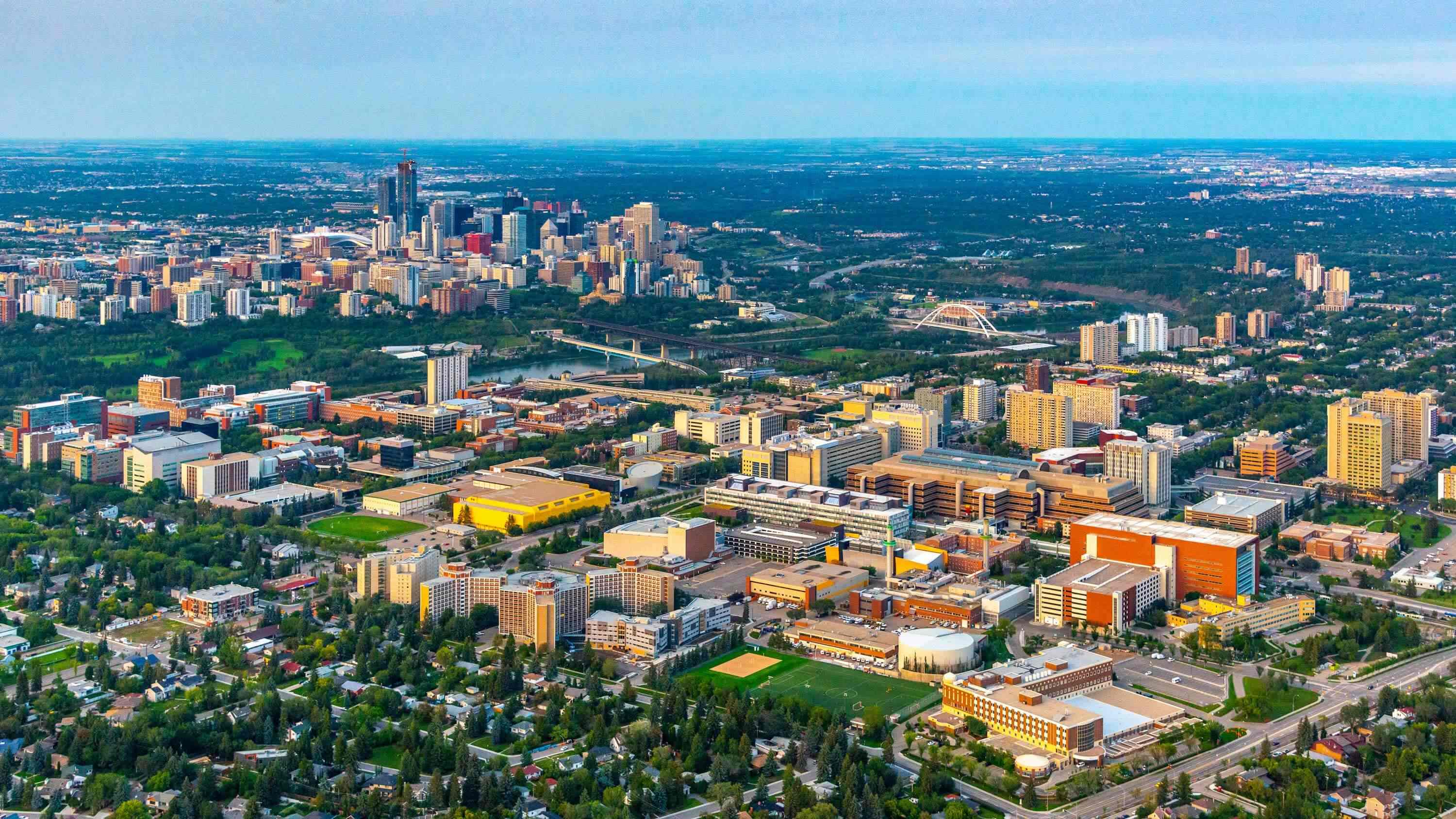For years, the University of Alberta and Edmonton International Airport (YEG) have enjoyed a fruitful relationship, mutually promoting everything from student and staff recruitment to economic growth.
Now that partnership has been formalized with a new memorandum of understanding between the two organizations that, among other things, will see the creation of a joint committee to annually plan for and track the progress of a number of shared interests.
The partnership will be led by Myron Keehn, vice-president of air service, business development, ESG and stakeholder relations with YEG, and Matina Kalcounis-Rueppell, interim dean of the U of A’s College of Natural and Applied Sciences, who will meet regularly to “strengthen connections between the two organizations and identify opportunities for collaboration.”
YEG has long been an ally in the U of A’s efforts, says Kalcounis-Rueppell. In addition to procuring flights, ensuring students are aware of flight packages and helping welcome international students, for example, the airport understands the importance of direct routes from Edmonton to major European and U.S. centres.
“It’s really important for our researchers to have that direct flight into Edmonton,” says Kalcounis-Rueppell. “When we're trying to recruit researchers from across the world, it matters that we can say there are direct flights to ports in Europe.
“And when we're recruiting Canadian students to PhD programs, those students are also looking to make sure Edmonton is a good place for them to network with their international peers.”
Shared interest, shared vision
In the words of the agreement, the collaboration “has the potential to transform the ways the U of A engages the public in its work and research, and will give YEG access to local, Alberta innovations in science and technology.”
“The airport and the university have a shared interest in making Edmonton, and the greater Edmonton region, a vibrant place to work and live,” says Kalcounis-Rueppell. “This agreement enables us to work together for all of our mutual objectives.”
The U of A’s strategic vision for the future – outlined in For the Public Good and the University of Alberta for Tomorrow – is committed to excellence in teaching, learning and community engagement, says Kalcounis-Rueppell, as well as driving social and economic growth and innovation in the region.
YEG’s mission is, in the words of the agreement, to “drive our region's economic prosperity in a sustainable manner … accelerating business by commercializing ideas for local and international markets.”
“At its core, it’s about being a community and working together for the betterment of our region,” says Keehn. “In the same way the airport is a gateway to the world, the U of A is a gateway to innovation and learning.”

YEG works hard at supporting innovation in a number of industries, says Keehn, including aviation, cargo, manufacturing, logistics, drone technology, Indigenous partnerships and sustainable fuel sources.
The airport has also committed to being net zero by 2040, “and that commitment requires innovative leaders like the ones currently learning and developing at the U of A and other universities around the world.”
Building on a successful relationship
Fields of interest for potential collaboration include all areas of science, engineering, agriculture, life and environmental sciences, and business.
One research program involving close collaboration between YEG and the U of A is a project to create jet fuel from biowaste, based in the Faculty of Agricultural, Life & Environmental Sciences.
In terms of the regional economy, says Kalcounis-Rueppell, the agreement is about “making sure that the community and industry are aware of the collaborative work we both do, as well as communicating our shared success.”
When Edmonton is involved in a trade mission with other countries, for example, those countries might be interested in the city’s tech-innovation ecosystem. A foreign company interested in relocating to the region might also be curious about the local talent pipeline in fast-growing areas such as energy transition, robotics, automation and artificial intelligence — areas in which the U of A excels.
“If we're around the table as a partner, we can tell them, ‘This is what the University of Alberta is known for in terms of the deep historical discovery and applied research that has happened here.’”
The agreement allows for both the U of A and YEG to have a single point of contact, says Kalcounis-Rueppell, so both parties can acquire information for their respective community partners “in a quick turnaround.”
Both partners have also committed to securing funds to support their collaborations, whether through government grants, further industry collaboration or research support.
“It is our aim to affirm our global leadership in all aspects of what we do as a post-secondary institution,” says Kalcounis-Rueppell, “and the airport can help with that.”
“Investing in our community and helping the Edmonton Metro Region is about supporting new ideas, new leaders and the exciting future that comes along with that,” says Keehn.
